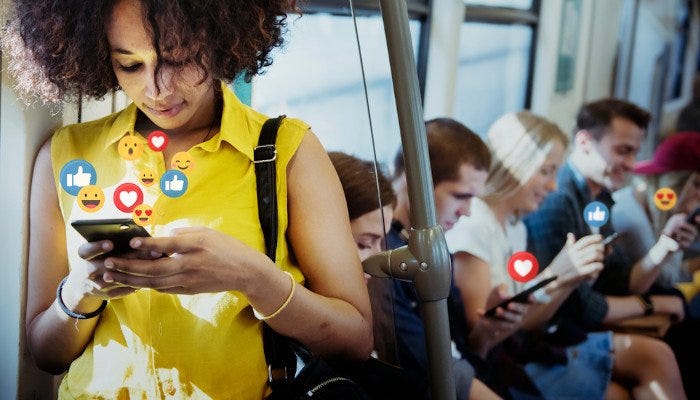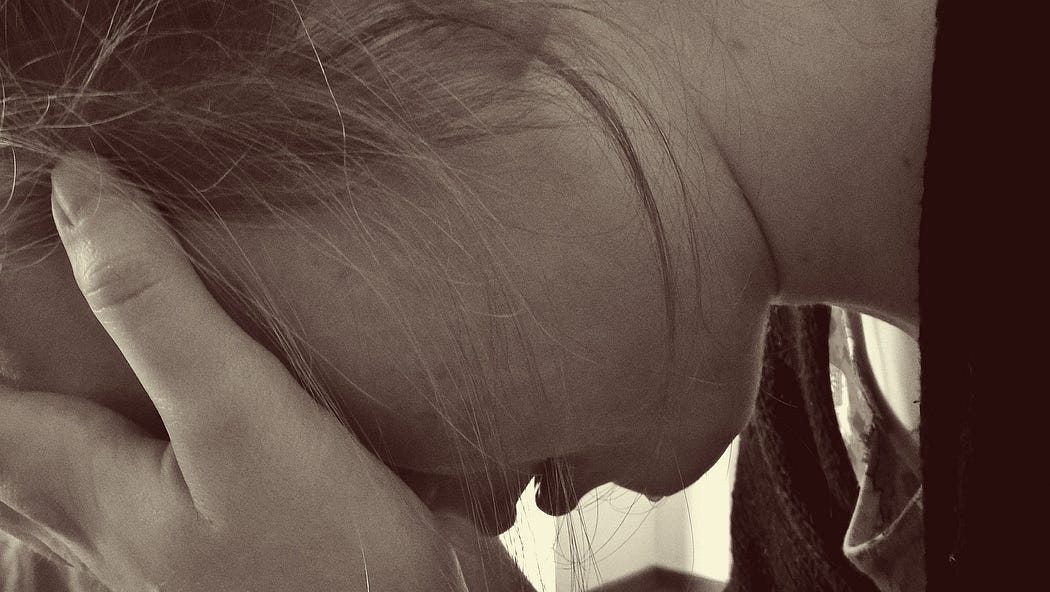Navigating the Dark Side of Social Media: A Critical Look at its Impact on Kids and Teens.

The seriousness of this issue must be made clear and must finally gain attention.
I am angry and disappointed that companies, worth billions, do not want to admit that their apps, their programmed algorithms can also harm people, especially children and young people.
The Impact of Social Media on Children and Adolescents: Addiction and Self-Esteem
Social media is an ever-present part of our lives, and children and adolescents are growing up in a world where online interactions are just as important as those in person. While social media can have some positive effects, there are also risks associated with its use, particularly when it comes to addiction and self-esteem.
Addiction
Social media addiction is a real phenomenon, and it can be just as dangerous as any other type of addiction.
In fact, research has shown that the same brain circuits that are activated by drug use are also activated by social media use.
This means that social media can be just as addictive as drugs.
One study conducted by Common Sense Media found that 50% of teenagers feel addicted to their mobile devices, and 59% of parents feel that their children are addicted to their devices. This addiction can have serious consequences, including sleep disturbances, decreased academic performance, and social withdrawal.
Here are relevant sources that readers can follow up on
- Kuss, D. J., Griffiths, M. D., & Binder, J. F. (2013). Internet addiction in students: Prevalence and risk factors. Computers in Human Behavior, 29(3), 959–966. doi:10.1016/j.chb.2012.12.024
- National Institutes of Health. (2018). Social Media Use and Adolescent Mental Health: An Overview. Retrieved from https://www.ncbi.nlm.nih.gov/pmc/articles/PMC6176776/
- Twenge, J. M., Joiner, T. E., Rogers, M. L., & Martin, G. N. (2018). Increases in depressive symptoms, suicide-related outcomes, and suicide rates among U.S. adolescents after 2010 and links to increased new media screen time. Clinical Psychological Science, 6(1), 3–17. doi:10.1177/2167702617723376
- Common Sense Media. (2016). Technology Addiction: Concern, Controversy, and Finding Balance. Retrieved from https://www.commonsensemedia.org/research/technology-addiction-concern-controversy-and-finding-balance

Self-esteem
Another risk associated with social media use is the impact it can have on self-esteem.
Social media provides a platform for users to present a curated version of their lives, which can lead to feelings of inadequacy and low self-esteem for those who compare themselves to others online.
A study by the Royal Society for Public Health found that social media use is linked to increased rates of anxiety, depression, and poor sleep.
The study also found that social media can contribute to feelings of inadequacy, particularly among young people who are constantly bombarded with images of “perfect” bodies, lifestyles, and experiences.
Cyberbullying and online harassment
Cyberbullying and online harassment refer to any form of bullying or harassment that occurs online, through social media, text messages, instant messages, or other digital channels.
This can include sending hurtful messages or images, spreading rumors, or making negative comments about someone online.
For children and adolescents, cyberbullying and online harassment can have a serious impact on their mental health and well-being.
Studies have shown that being a victim of cyberbullying is linked to higher rates of anxiety, depression, and other mental health issues in young people (Hinduja & Patchin, 2015; Kowalski & Limber, 2013).
Cyberbullying can also lead to social isolation, lower self-esteem, and academic problems.
It’s important for parents and caregivers to be aware of the signs of cyberbullying and to talk with their children about how to stay safe online.
Encouraging open communication and providing guidance on how to handle negative online interactions can help children and adolescents feel more confident and prepared to deal with cyberbullying.
References:
- Hinduja, S., & Patchin, J. W. (2015). Bullying beyond the Schoolyard: Preventing and Responding to Cyberbullying. Thousand Oaks, CA: Corwin Press.
- Kowalski, R. M., & Limber, S. P. (2013). Psychological, physical, and academic correlates of cyberbullying and traditional bullying. Journal of Adolescent Health, 53(1), S13-S20.
One study conducted in the United States found that students who were victims of cyberbullying were more likely to experience emotional distress, anxiety, and depression (Kowalski & Limber, 2013).
In some cases, cyberbullying has also been linked to suicidal thoughts and behaviors.
For instance, a high-profile case involved a 13-year-old girl named Megan Meier, who was cyberbullied by a group of individuals who created a fake social media profile to gain her trust, then used it to send her cruel messages. After receiving a message telling her that the world would be better off without her, Megan tragically took her own life (Kowalski & Limber, 2013).
This is just one example of how cyberbullying can have devastating consequences for children and adolescents. It’s important for parents, educators, and caregivers to take cyberbullying seriously and to work together to prevent and address it.
References:
- Kowalski, R. M., & Limber, S. P. (2013). Psychological, physical, and academic correlates of cyberbullying and traditional bullying. Journal of Adolescent Health, 53(1), S13-S20.

Distorted body image and eating disorders
Distorted body image is a common issue among children and adolescents, and social media can play a role in perpetuating unrealistic beauty standards.
Exposure to images of thin or idealized bodies on social media can lead to negative body image, which in turn can contribute to the development of eating disorders such as anorexia nervosa, bulimia nervosa, and binge eating disorder.
One study found that teenage girls who spent more time using social media were more likely to experience body dissatisfaction, which in turn was associated with a greater risk of developing an eating disorder (Fardouly, Diedrichs, Vartanian, & Halliwell, 2015).
In addition, social media platforms that encourage users to post images and videos of themselves can make it difficult for young people to avoid comparing their bodies to others’. This can contribute to feelings of inadequacy and self-doubt, which can further fuel negative body image and disordered eating behaviors.
It’s important for parents, educators, and caregivers to be aware of the potential risks of social media use on body image and to encourage young people to develop a healthy relationship with their bodies.
This can involve promoting positive self-talk, emphasizing the importance of self-care, and seeking professional help when needed.
References:
- Fardouly, J., Diedrichs, P. C., Vartanian, L. R., & Halliwell, E. (2015). Social comparisons on social media: The impact of Facebook on young women’s body image concerns and mood. Body Image, 13, 38–45.
On this topic, so-called influencers also have a responsibility towards their fans. Radiating perfection can affect the self-esteem of some people.

Effects on emotional and mental health
While social media has the potential to connect people and provide a platform for self-expression, it can also have negative effects on emotional and mental health, particularly among children and adolescents.
One study found that heavy social media use was associated with increased risk for depression, anxiety, and other mental health issues (Lin, Sidani, Shensa, Radovic, Miller, & Colditz, 2016).
Social media can also contribute to feelings of loneliness and isolation, as users may feel pressure to constantly present a perfect image of themselves online.
In addition, social media can lead to social comparison, where individuals compare their lives to others based on curated content, leading to feelings of inadequacy and self-doubt.
This can be particularly damaging to children and adolescents who are still developing their sense of self and their social skills.
To promote emotional and mental health in children and adolescents, it is important to encourage them to limit their social media use, focus on building real-life relationships, and seek support when needed.
Parents, educators, and caregivers can also provide resources and support to help young people navigate the challenges of social media.
References:
- Lin, L. Y., Sidani, J. E., Shensa, A., Radovic, A., Miller, E., & Colditz, J. B. (2016). Association between social media use and depression among US young adults. Depression and anxiety, 33(4), 323–331.
The influence of social media on education
Social media can be a major source of distraction for children and adolescents, particularly when they are trying to complete homework or study.
Studies have shown that students who use social media while studying tend to perform worse on academic tasks and have more difficulties with concentration (Rosen, Lim, Carrier, & Cheever, 2011).
Lack of media literacy and problems with information comparison:
Social media can also lead to a lack of media literacy, as users may have difficulty distinguishing between credible and non-credible sources of information.
This can be particularly problematic for children and adolescents, who may lack the experience and knowledge needed to evaluate information critically.
In addition, social media platforms can contribute to the spread of misinformation and fake news, which can have negative consequences for society as a whole.
Children and adolescents who are not equipped with the skills needed to evaluate information critically may be more vulnerable to these risks.
Changed learning behavior and the role of social media:
Social media can also change learning behavior by encouraging a more collaborative and participatory approach to learning.
For example, some educators have used social media platforms to facilitate discussions, share resources, and engage students in group projects.
However, social media can also contribute to a more passive approach to learning, as students may rely on social media to provide them with information rather than engaging with the material directly.
This can lead to a lack of critical thinking and independent learning skills, which are essential for success in school and beyond.
To promote media literacy and effective learning behaviors, it is important for parents, educators, and caregivers to provide guidance and support.
This can involve teaching children and adolescents how to evaluate information critically, limiting social media use during homework and study time, and emphasizing the importance of independent learning skills.
References:
- Rosen, L. D., Lim, A. F., Carrier, L. M., & Cheever, N. A. (2011). An empirical examination of the educational impact of text message-induced task switching in the classroom: Educational implications and strategies to enhance learning. Educational Psychology, 31(4), 367–386.
Social media is a powerful tool that has the potential to connect people and bring about positive change. However, it is important to be aware of the risks associated with its use, particularly for children and adolescents. By taking steps to promote positive self-esteem and limit addiction, we can help ensure that social media has a positive impact on our children and their futures.


Comments
Post a Comment